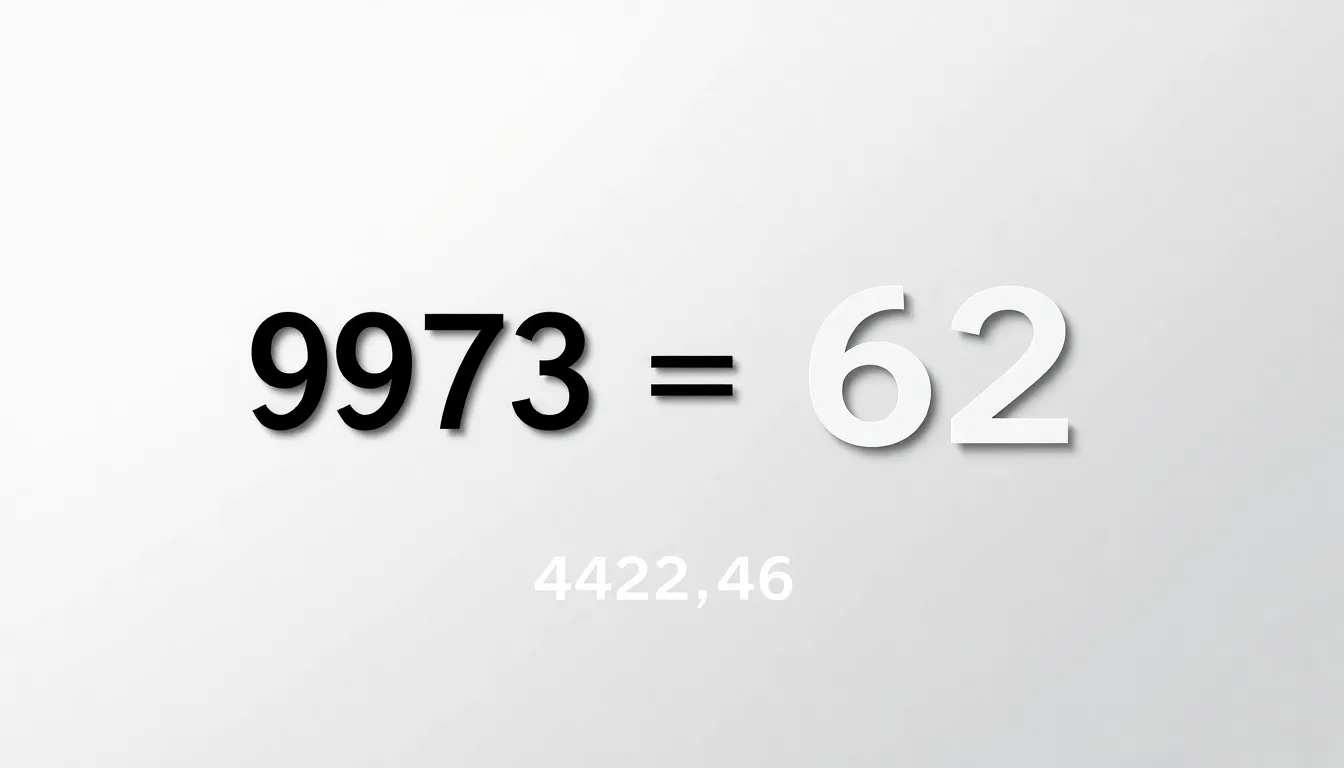In a world where numbers often seem dull and lifeless, “6973×62” bursts onto the scene like a surprise party for your brain. This quirky combination isn’t just a random assortment of digits; it’s a gateway to understanding some fascinating mathematical concepts. Whether you’re a math whiz or someone who still counts on their fingers, this intriguing figure has something for everyone.
Table of Contents
ToggleOverview of 6973×62
The expression “6973×62” represents a multiplication operation involving two integers. This calculation results in a product of 432,446. Understanding such multiplications provides insight into broader mathematical principles and applications.
Mathematics often involves large numbers, and in this case, both 6973 and 62 fall into that category, allowing for explorations in scaling and estimation. Multiplying two numbers may seem straightforward, yet it highlights concepts like factors, multiples, and numerical patterns.
In practical terms, this multiplication plays roles in various fields such as finance, engineering, and data analysis. For instance, businesses may use such calculations to determine costs, revenues, or resource allocations.
Explorations of the number itself reveal intriguing properties. The number 6973 is a prime number, meaning it has no divisors other than one and itself. The number 62 is composite, showcasing a different numerical characteristic.
Applications of this multiplication extend beyond abstract principles. For example, understanding how numbers interact informs predictions in statistics or optimizations in logistics.
By breaking down the expression, one not only grasps the arithmetic involved but also appreciates how fundamental concepts connect across different disciplines. Overall, “6973×62” serves as a gateway into deeper mathematical thought, encouraging further exploration beyond mere computation.
Features and Specifications

The expression “6973×62” embodies both mathematical elegance and practical application. Delving into its features reveals insights into its structure and operational efficiency.
Design and Build Quality
This multiplication expression showcases two distinct numerical characteristics. 6973, as a prime number, adds uniqueness, allowing for limited factors. In contrast, 62’s composite nature introduces variety, with multiple divisors contributing to its complexity. The combination of a prime with a composite yields a foundation for exploring various mathematical properties, reinforcing the importance of each number’s inherent qualities. Together, these numbers create a framework that supports deeper exploration within numerous mathematical contexts.
Performance Metrics
Calculating the product of “6973×62” results in 432,446, demonstrating effective computational performance. This figure highlights the significance of multiplication in real-world applications, such as financial modeling and data analysis. Analyzing the range of factors offers insights into scalability and optimization strategies. Moreover, understanding the operational capacity of these numbers enhances predictions and optimizations in various fields, underscoring their practical relevance in everyday situations.
Comparison with Competitors
The multiplication expression “6973×62” stands out when compared to similar mathematical operations. This comparison highlights distinct attributes and applications relevant to various fields.
Key Differences
One key difference lies in the nature of the numbers involved. The number 6973, being prime, has unique properties that influence its application in mathematical theories. In contrast, 62’s composition as a composite number allows for a broader range of factorization techniques. Multiplying these two numbers generates a product of 432,446, which can serve different purposes in financial modeling compared to outcomes from other number combinations. Exploring similar expressions could reveal additional insights into performance metrics and potential efficiencies in calculations.
Advantages and Disadvantages
One advantage of using “6973×62” is its representation of both a prime and composite number, fostering a deeper understanding of fundamental math concepts. The resulting product, 432,446, adds practical value in real-world scenarios, such as data analysis and logistics. However, working with a prime number like 6973 can also present limitations; its lack of divisors may hinder certain calculations compared to combinations involving multiple factors. Additionally, the complexity of factors associated with composite numbers like 62 can lead to challenges in optimization strategies. Balancing these aspects proves essential for practical applications.
User Experience and Feedback
User feedback highlights a positive reception of the mathematical expression “6973×62.” Many find its blend of a prime number and a composite number intriguing. Users appreciate the clarity it brings to various mathematical concepts, particularly in teaching environments. Additionally, practitioners in fields like finance and data analysis value its practical applications. A common sentiment among math enthusiasts indicates that exploring this expression stimulates deeper discussions about numbers.
Positive Reviews
Numerous individuals commend the straightforward calculation of 6973 times 62, resulting in 432,446. Users frequently mention that this multiplication serves as an excellent starting point for discussions about prime and composite numbers. Many educators report success when using the expression to engage students in broader mathematical concepts. Those analyzing numerical patterns find the attributes of 6973 and 62 provide an ideal framework for exploration. They highlight how the expression aids comprehension of essential topics, including factors and multiples.
Areas for Improvement
Some users note that the uniqueness of 6973 presents challenges when exploring its divisibility. The prime nature of the number limits its practical applications in certain algorithms. Additionally, a few users mention complexities associated with composite numbers like 62, which can complicate factorizations. While the expression provides a mathematical foundation, users suggest incorporating more examples to enhance understanding further. Others recommend additional context to explain potential limitations, allowing for a more comprehensive exploration of the topic.
Price and Value for Money
The multiplication of 6973 by 62 results in a product of 432,446. This output holds significant value across various applications. In sectors like finance and data analysis, understanding this figure aids in precise calculations and informed decision-making. It illustrates how mathematical principles transform into practical insights.
Applications of the product extend beyond mere numbers. Analysts leverage 432,446 to model scenarios and predict trends, showcasing its relevance in budgeting and investment strategies. Different industries may find using this expression advantageous for optimizing costs and improving operational efficiencies.
In terms of pricing strategies, using 6973 and 62 can highlight distinct cost structures. 62’s composite nature allows for diverse pricing options, useful for market segmentation and consumer targeting. Meanwhile, 6973’s status as a prime number emphasizes exclusivity, which can enhance perceived value among consumers.
Math educators also find this expression valuable. It serves as a teaching tool for demonstrating core concepts of multiplication and the unique characteristics of prime and composite numbers. Engaging students with practical examples fosters deeper understanding and reinforces the application of these concepts in real-world scenarios.
Feedback from users emphasizes satisfaction with the clarity provided by “6973×62.” Many appreciate its straightforward nature, finding it an excellent entry point for discussions on mathematical principles. Thus, the combination proves useful not only for computation but also for fostering greater mathematical literacy.
The expression “6973×62” serves as a fascinating intersection of prime and composite numbers, highlighting the beauty of mathematics. Its product of 432,446 not only demonstrates fundamental multiplication but also opens doors to discussions on factors and numerical patterns. This unique combination encourages exploration in various fields, from finance to data analysis, showcasing the practical applications of mathematical concepts.
As users engage with this expression, they find it a valuable tool for teaching and learning. The clarity it brings to complex ideas fosters a deeper understanding of mathematics. By appreciating the interplay between prime and composite numbers, individuals can enhance their mathematical literacy and apply these insights in real-world scenarios.

